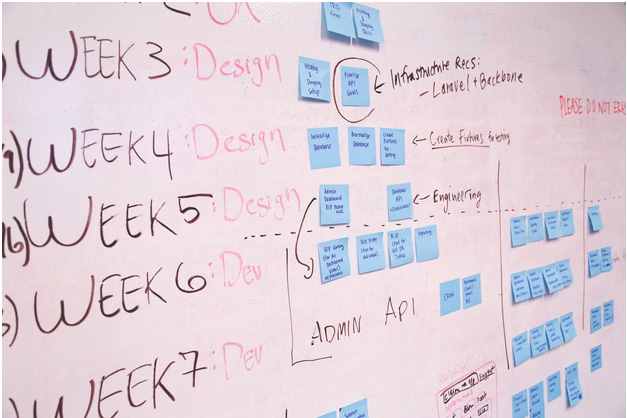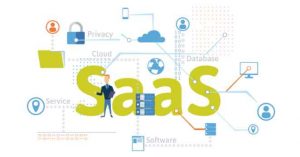Starting a SaaS Business in Florida: 6 Things to Build a Bulletproof Business
Together, Florida SaaS companies serve more than 44,000 customers around the world, employ over 3,000 people, and have raised $63.4 million in capital. Obviously, the Sunshine State provides great conditions for the growth and development of SaaS companies. However, if you’re thinking about joining the SaaS bandwagon there, you should be aware that the competition is fierce. This means that if you want to build a bulletproof business that will be able to drive traffic, generate leads, and turn those leads into customers, you will need to have a solid plan.
In this post, we’re diving into 6 steps that you will need in order to plan, launch, and grow a successful SaaS business.

Image source: Pexels
1. Write Up a Business Plan
A business plan is similar to a roadmap that will guide you through the process of developing a SaaS startup, making the whole idea much clearer. One option is to write a traditional business plan that will cover market analysis and business overview, describe your financial plan, projections, etc. As an alternative, you can create a lean business plan, which is much shorter as it briefly outlines the key points.
The most important points to be covered when starting a SaaS business include:
- Identifying a problem and offering a solution
- Defining your target audience;
- Choosing a hosting provider;
- Researching your competitors;
- Defining sales channels and marketing strategies;
- Revenue sources;
- Milestones;
- Resources and partners.
Writing a lean business plan takes less time and since it is brief, you can expect quick feedback from your business partners and prospective customers. In addition, this document can be easily edited and can serve as a foundation for a more detailed business plan. Most importantly, a lean business plan is more effective than a traditional one since it requires less planning and more action.
2. Think About Safety and Security
The level of convenience and innovation that SaaS companies offer comes with unique risks. For instance, the majority of SaaS businesses store sensitive customer data on their networks including PII, payment details, and medical records. This means that they’re at great risk of cyberattacks and data breaches.
Most SaaS businesses are fast-growing, which means that their insurance needs will also grow fast as their operations expand. As a startup owner, it is very important to work with insurance professionals who are familiar with the challenges you’re facing. For instance, You can find Florida business insurance specially designed for small businesses and can help you find a customized insurance program that will evolve with you as your risk profile changes.
3. Get Funding and Financing
When it comes to financing your SaaS venture, you can choose from several different options. The first one is bootstrapping, i.e. financing your company using your personal savings or earning money in other ways, not related to your SaaS business (e.g. by renting out your apartment).
However, if you don’t have enough money to support your business, you will need to look for other investment sources. One option is to borrow money from your friends or family members, which is quite flexible when it comes to giving the money back. On the downside, if your SaaS startup doesn’t turn out to be as successful as you expected, you might not be able to pay off the debt as planned, which may put a strain on your relationships with close people.
Finally, you can turn to angel investors. Visit platforms like Crunchbase and AngelList to find professionals who might see potential in your business idea.
4. Build a Brand for Your SaaS
As mentioned earlier, the SaaS landscape in Florida is quite competitive, so the question is: How do you differentiate yourself from the competitors? By building a strong brand.
The first step is to make your vision crystal clear so that every member of your team can understand what direction you are following and what you are trying to achieve. Next, be sure to focus on the quality of your SaaS product. In SaaS, developing strong relationships with customers is everything but building such relationships will be impossible if you don’t deliver on your promises.
Finally, find some time to think about your company’s name. The name you choose when building your startup can greatly influence its future, so choose wisely. Pick something that’s easy to read, write, and remember, and ensure that none of your competitors already has your desired name.
5. Launch a Minimum Viable Product First
It’s time to talk about developing your product because, at the end of the day, it is the value and quality that your product offers to the end-user that will determine whether your venture is successful or not.
So, in order to be sure that the customers will like your SaaS product, start by launching a minimum viable product. An MVP is a version of your product that has just enough key features to be usable and get feedback from early adopters and investors. It can help you confirm whether there is a need for your product and identify the features that customers need the most.
Keep in mind that an MVP is different from a full-fledged product, so you shouldn’t waste your time polishing up its features. Test different models to determine which one works best for you.
6. Develop a Marketing Strategy
In order to promote your product successfully, you will need to find how they differ from other products available on the market.
One of the strategies that work best for SaaS is giving free trials. Free pricing models come with several options: freemium, trial without credit card info, 30-days free trial, etc.
Another option is to shorten the sales cycle. Today’s customers look to spend less time when choosing software products. They want to do a quick research and maybe try a demo version, after which they will decide which product satisfies their needs. In order to target these customers, you should provide as much information about your software as possible. This way, you’ll be able to persuade customers to opt for your product among other similar ones.
Final Thoughts
Starting a strong SaaS business takes time. And while these 6 steps will provide you with a solid starting point, they are just the tip of the iceberg. However, as long as you have a strong working plan, a quality product, and you are willing to iterate, your SaaS business will stand a chance against the competitors.





